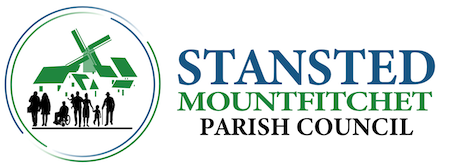To help you take part in the government’s consultation on night flights at Stansted Airport, we have put to together a short explainer piece outlining some of the issues involved.
Night flights — What’s the problem, anyway?
Flying planes over urban areas at night has a long association with negative health outcomes. They can affect sleep patterns, cause hypertension and raise the risk of coronary heart disease, strokes and cancer. The government acknowledges that this is the case. That is why restrictions on night flights exist. They hope a study, the Aviation Night Noise Effects report to be published in 2025, will provide clarity on the link between aviation noise and sleep disturbance.
How are night flights controlled in the UK?
The airports at Gatwick, Heathrow and Stansted face two sets of restrictions for night flights: movement and noise quota limits. Movement limits are a cap on the total number of flights over the course of a year that airports can schedule from 11.30pm to 5.59am —13,700 in the case of Stansted. The noise quota means these airports must not exceed limits on the overall noisiness of night flights. Stansted also faces a further restriction following a planning decision made by Uttlesford District Council in 2021. In granting the airport’s owners permission to expand passenger capacity, the local authority imposed a night noise limit from 11pm to 7am.
Why are the government considering changes?
The reasoning behind Option 1 and Option 2* is that Uttlesford’s noise limit represents a “material change” to the existing night flight regime, according to the DfT which has responsibility for setting restrictions. The Department takes the view that local authorities, by being closer to communities affected by night flights, are in a better position to set conditions on airport operators. Essentially the government is re-assessing its own position as regulator. Are nationally imposed limits required at Stansted if similar ones have now been set locally? The DfT says a balance must be struck, too, between the commercial interests of the airline industry and the concerns of local communities affected by night flights. Furthermore, they question that if jet engines are now less noise polluting, cannot limits be eased?
How would an easing of limits affect our village?
It is the Parish Council’s position restrictions should remain in place, in the absence of convincing evidence night flights are safer than current evidence suggests. The Manchester Airport Group, which run Stansted Airport, already push the boundaries of the existing regulations. For example, last summer they were granted 1,200 dispensations to exceed night flight limits (by comparison Heathrow, the UK’s largest airport, were granted just 462). So if anything MAG need to be reigned in on this front. We don’t believe Stansted Airport is the bogeyman. It brings jobs and business to our community and is a genorous backer of local organisations. Still, more night flights have the potential to worsen the health of residents. That’s why we back a continuing of the existing night flight regime.
Where can I learn more about the issues involved?
For an overview of the case against nightflights head to www.stanstedairportwatch.com
Stansted Airport has produced a pdf of their own Draft Noise Action Plan 2024-2028. A copy is available for download from this website.
For background information on night flight noise restrictions search for Night flight restrictions: Heathrow, Gatwick and Stansted airports from October 2025 at www.gov.uk
How can I take part in the consultation?
You can respond online:
https://www.smartsurvey.co.uk/s/RFTSQV/
or complete a response form available at
Stanstedmountfitchet-pc.gov.uk/documents
and either email to:
night.flights@dft.gov.uk
Write to:
Night Flights consultation
Airport Policy – 4th Floor
Great Minster House
33 Horseferry Road
London SW1P 4DR
NB *For details on Option 1 & Option 2, and to take part in the consultation head to Night flights: Have Your Say Before May 22
